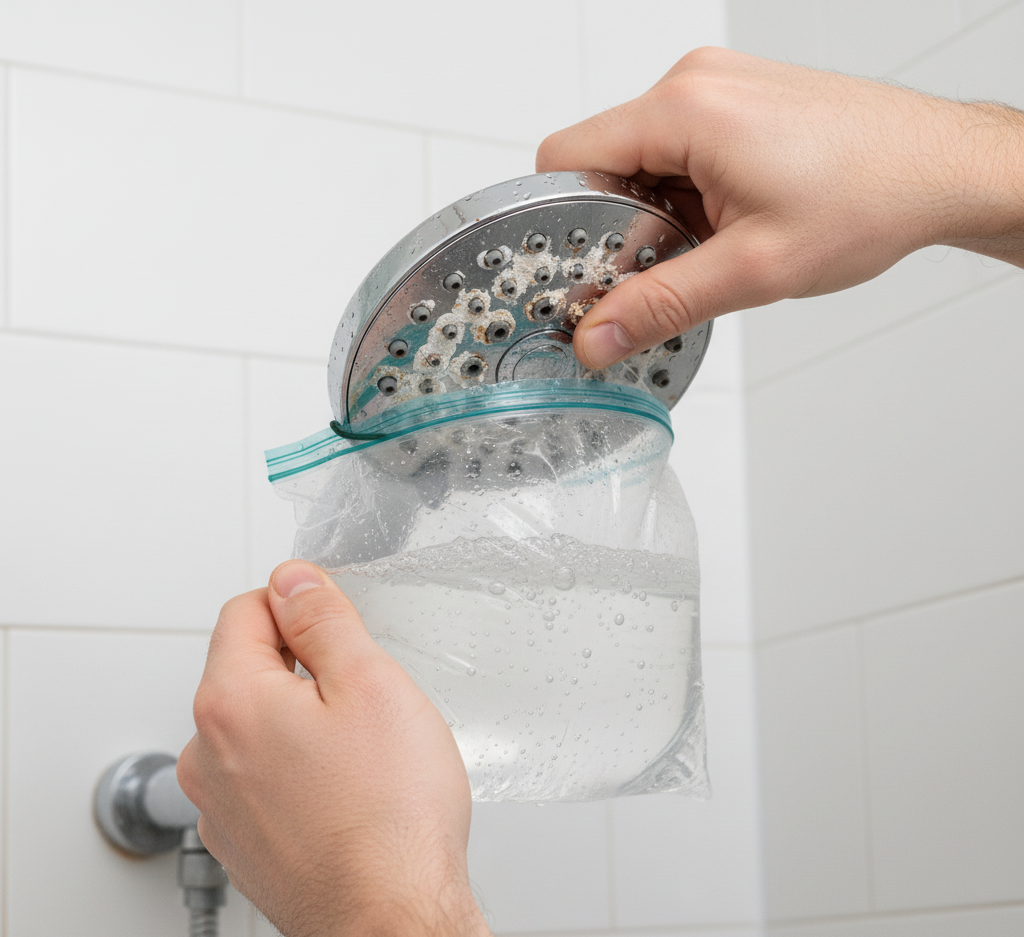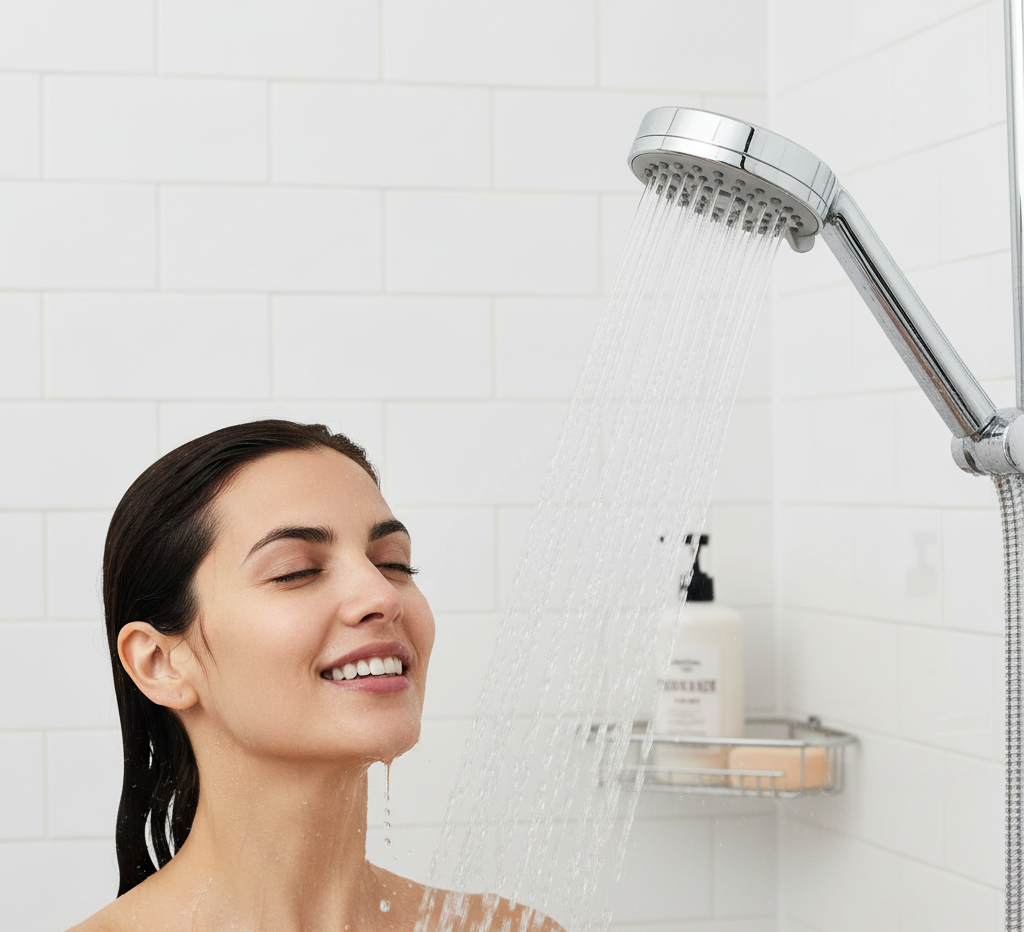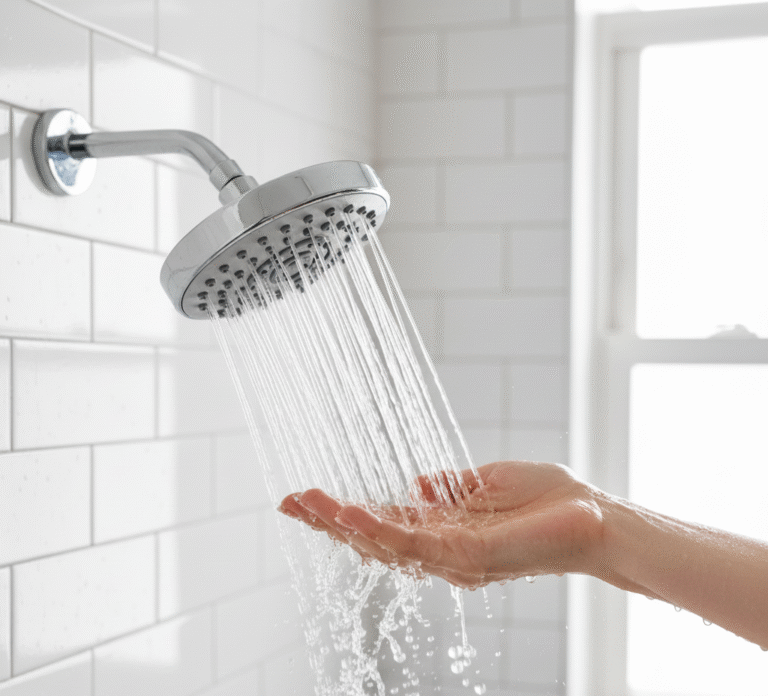A shower head is more than a simple bathroom fixture; it is the source of a daily ritual, a cascade of water that can awaken the senses or wash away the stresses of the day. When it functions properly, the stream is full, consistent, and directed. Over time, however, this reliable flow can diminish into a weak, sputtering, and erratic spray. Jets that once produced a perfect stream may become completely blocked, while others shoot water at odd angles, creating a less than satisfying experience. This decline in performance is not a sign that the fixture needs to be replaced, but rather a clear indication that it is in desperate need of a thorough cleaning. The culprit behind this gradual degradation is almost always an accumulation of mineral deposits, soap scum, and biofilm that clog the tiny nozzles from the inside out.

Hard Water
The primary cause of this blockage is hard water, a common issue in many municipal water systems. Hard water is characterized by a high concentration of dissolved minerals, predominantly calcium and magnesium. As water passes through the shower head and the residual moisture evaporates, these minerals are left behind. They precipitate out of the solution and form a hard, chalky substance known as limescale, or calcium carbonate. This scale builds up layer by layer, slowly constricting the openings of the nozzles, much like plaque in an artery. The process is slow and often goes unnoticed until the water pressure is significantly impacted. In addition to these mineral deposits, soap scum, which is a reaction between soap and the minerals in hard water, can contribute to the blockage, creating a gummy, resilient film. Compounding this issue is the dark, damp, and warm environment inside the shower head, which is an ideal breeding ground for bacteria and other microorganisms to form a slimy layer called biofilm. This organic matter can further clog the jets and introduce a subtle but persistent hygienic concern.
Fortunately, restoring a shower head to its former glory is a straightforward maintenance task that requires minimal tools and common household ingredients. The most effective and widely used method involves using the acidic properties of white distilled vinegar to dissolve the mineral buildup. Acetic acid, the active component in vinegar, reacts with the alkaline calcium carbonate deposits in a chemical process that breaks them down into water-soluble calcium acetate and carbon dioxide gas. This reaction effectively melts away the stubborn scale without the need for harsh, abrasive scrubbing that could damage the fixture’s finish. The simplest way to apply this treatment is the immersion bag method. To do this, you will need a sturdy plastic bag large enough to envelop the shower head, a rubber band or zip tie to secure it, and enough white distilled vinegar to fully submerge the face of the fixture.

The process
The process begins by carefully pouring the vinegar into the plastic bag. Then, lift the bag up and over the shower head, ensuring that all the nozzles and the faceplate are completely immersed in the liquid. Secure the bag tightly around the shower arm with the rubber band or zip tie, making it snug enough to hold the weight of the vinegar and prevent any leaks. The shower head should then be left to soak. For light buildup, a few hours may be sufficient, but for more heavily calcified fixtures, it is best to leave it overnight. During this time, you may even notice small bubbles forming as the acid reacts with the limescale, a visible sign that the cleaning process is working. After the soaking period is complete, carefully remove the bag and pour the used vinegar down the drain. The next step is to flush out all the loosened debris. Turn on the hot water and let it run through the shower head for a few minutes. You should immediately notice an improvement in the flow and spray pattern. To address any remaining stubborn clogs, an old toothbrush can be used to gently scrub the faceplate and nozzles. For the most persistent blockages within individual jets, a small pin, a paperclip, or even a toothpick can be used to carefully poke into the opening and dislodge the softened mineral plug.
For a more comprehensive cleaning, or in cases where the bag method is not sufficient to resolve severe blockages, it may be necessary to remove the shower head completely. This allows for a deeper soak that can clean not just the nozzles, but the internal components as well, including the often-overlooked filter screen. To remove the fixture, you will typically need an adjustable wrench or a pair of pliers. It is crucial to wrap the connecting nut with a cloth or a rag before applying the tool to prevent scratching or marring the finish. Turn the nut counter-clockwise to loosen it from the shower arm. Once it is detached, you can inspect the inside for any large pieces of debris. Pay close attention to the small mesh screen, or washer, located at the connection point, as this is designed to trap sediment and can become heavily clogged, severely restricting water flow. This screen can be removed and scrubbed clean with a toothbrush.

Immersion
With the shower head removed, it can be fully submerged in a bowl or bucket filled with white vinegar. This ensures the vinegar penetrates all the internal chambers for a truly thorough cleaning. After soaking for several hours or overnight, use a toothbrush to scrub both the exterior nozzles and the interior threads and chambers. Once it is clean, rinse it thoroughly with fresh water. Before reattaching the fixture, it is good practice to clean the threads on the shower arm and apply new plumber’s tape, also known as Teflon tape. Wrap the tape clockwise around the threads three to four times to create a secure, watertight seal that will prevent leaks. Then, screw the shower head back onto the arm, first by hand and then giving it a final quarter-turn with the wrench, again using a cloth to protect the finish. Be careful not to overtighten, as this can crack the connecting nut.
While vinegar is a highly effective, non-toxic, and inexpensive solution, other options exist. Lemon juice, which contains citric acid, works in a similar manner and can be used as an alternative. For purely abrasive cleaning of the exterior, a paste made from baking soda and water can be used to scrub away surface grime. When mixed with vinegar, baking soda creates a fizzing reaction, but this primarily neutralizes the acid, making the solution less effective at dissolving minerals; its main benefit in this combination is the mechanical scrubbing action. There are also commercial chemical cleaners specifically formulated to remove calcium, lime, and rust. These products are very powerful but are also much harsher. If you opt for one of these, it is imperative to follow the manufacturer’s instructions precisely, wear protective gloves and safety glasses, and ensure the bathroom is well-ventilated to avoid inhaling the strong fumes.

Be careful
The finish of your shower head is a critical consideration when choosing a cleaning method. Standard chrome is very durable and generally withstands prolonged exposure to vinegar. Brushed nickel and stainless steel are also robust, but care should be taken to avoid abrasive pads that could scratch the surface. Special finishes like oil-rubbed bronze, brass, and gold-plating require more caution. These fixtures are often coated with a protective lacquer that can be damaged or stripped by strong acids, including vinegar if left on for too long. For these delicate finishes, it is advisable to use a diluted vinegar solution, perform a shorter soak, or simply clean more frequently to prevent heavy buildup. A quick wipe-down after each use can go a long way in preserving both the function and the beauty of these fixtures.
Neglecting to clean a shower head has consequences beyond just a poor shower experience. The restricted flow can sometimes lead to increased pressure within the plumbing system. More importantly, the biofilm that develops inside can harbor various types of bacteria. While the risk to healthy individuals is generally low, these microorganisms are aerosolized along with the water and can be inhaled. Regular cleaning is a simple hygienic practice that minimizes this potential exposure. Furthermore, a shower head caked in limescale and scum is an eyesore that detracts from the overall cleanliness of the bathroom. Maintaining this single fixture can have a significant impact on the performance, hygiene, and aesthetic of your space, making it a maintenance task well worth the minimal effort it requires.

Maintaining the cleanliness of every fixture is key to a pristine and functional bathroom, from ensuring your shower head provides a perfect stream to making sure every surface shines. For those times when a deeper, more comprehensive clean is needed for your entire home, Toronto Shine Cleaning offers professional services that address every detail. We tackle the tough buildup and grime so you can enjoy a perfectly clean and refreshing space every day.



















